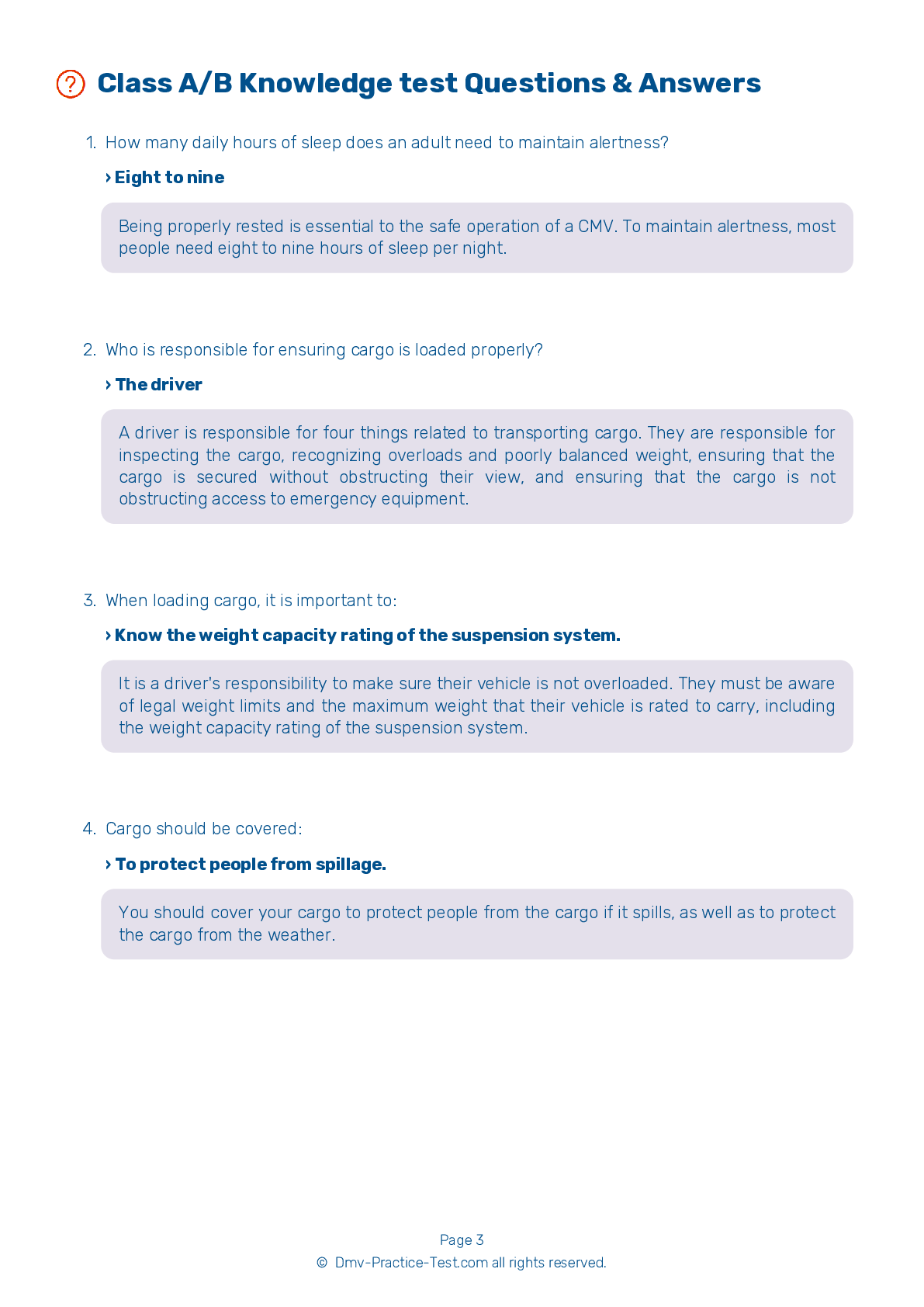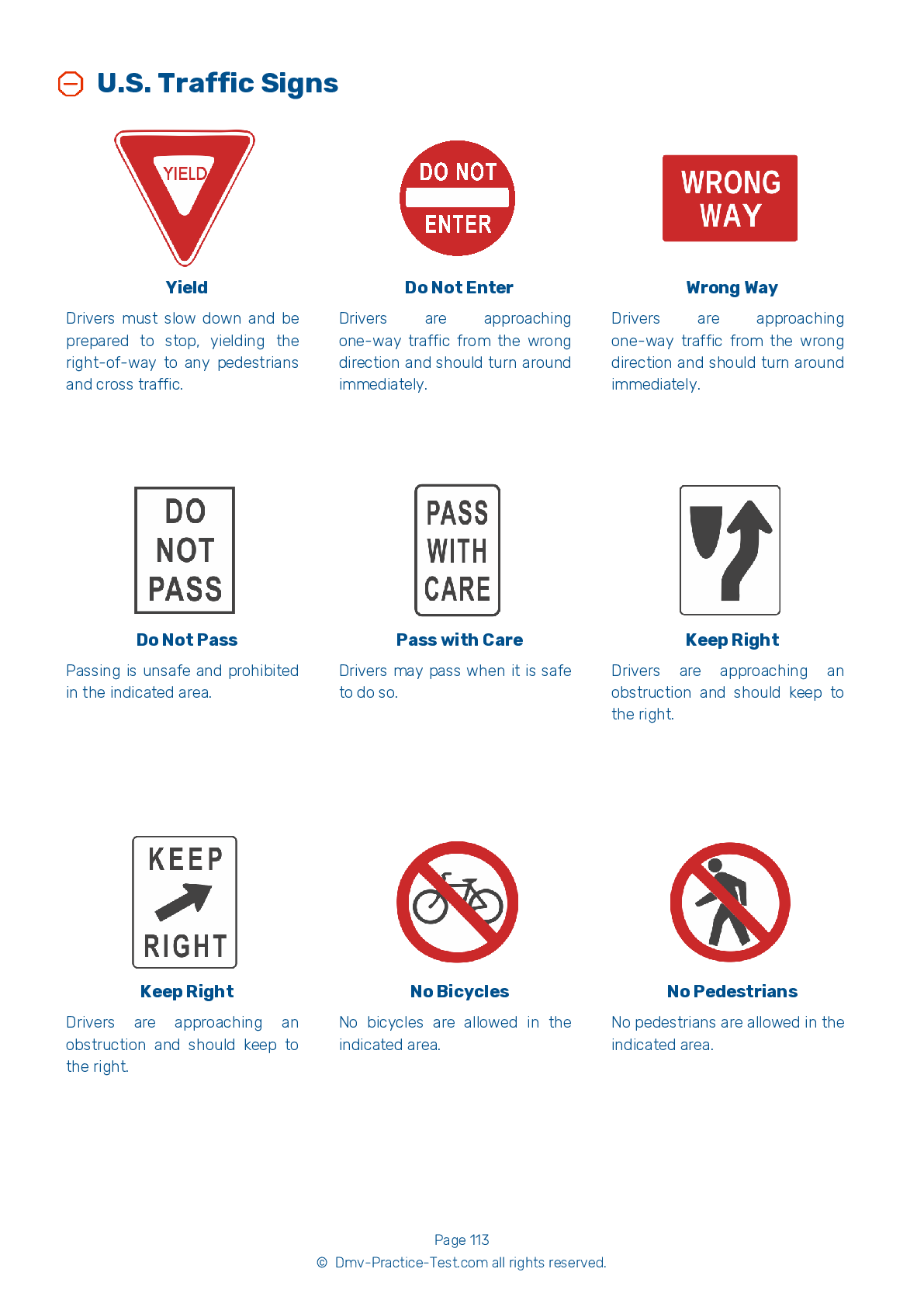Air Brakes Endorsement Test | Vermont 2025 #1 Page 4 of 4
Train for FREE online with our Vermont CDL air brake test. The official exam test consists of several obligatory parts, with all of them checking your knowledge of different blocks of road rules. If you need to obtain a VT Class A/Class B driver license in 2025, practice as much as possible. Free sample tests published on our website will help you check and improve your knowledge and boost your grades. Please bear in mind that the requirements for CDL may vary from state to state.
19 . In a vehicle with dual parking control valves, a separate air tank can be used:
In a vehicle with dual parking control valves, there is a separate air tank that can be used to temporarily release the spring brakes if they have been activated due to low air pressure. Pushing in the proper control will release the spring brakes for a short period of time, allowing the driver to move the vehicle in an emergency.
20 . What color light indicates a vehicle's ABS is not working?
On vehicles with Anti-Lock Braking Systems (ABS), yellow malfunction lamps alert the driver to ABS malfunction.
21 . The parking brake in a newer vehicle is applied by:
In newer vehicles with air brakes, the parking brake is controlled by a yellow, diamond-shaped knob. The driver should pull the knob outward to apply the parking brakes and push the knob inward to release them.
22 . What can happen if the air pressure gets too low in an air brake system?
Pressing and releasing the brake pedal unnecessarily can let air out of the braking system faster than the compressor can replace it. Air brakes may cease to work effectively if the pressure becomes too low.
23 . What should happen before the air pressure in an air brake system tank falls below 55 psi?
The low air pressure warning signal must activate before the air supply pressure drops below 55 psi in the air tank. If the warning signal does not turn on when being tested during an inspection, the vehicle is not safe to drive.
24 . Having ABS on only one axle:
If you have an Anti-Lock Braking System (ABS) equipped on only the tractor, only the trailer, or only one axle, you will still have more control over the vehicle when braking than you would without ABS. You should brake normally.
25 . During a static leakage test, what is the maximum leakage rate that is safe for a double combination vehicle?
When performing a static leakage test on a double combination vehicle with air brakes, the leakage rate should be no more than 3 psi in one minute. If the air leaks from the air brake system at a quicker rate, the vehicle should not be driven because something likely needs to be repaired.
See the exact questions that will be on the 2025 Vermont DMV exam.
99.2% of people who use the cheat sheet pass the FIRST TIME
Lillian MCcranie explains how our CDL study guide was helpful in passing the exam and recommends it to everyone.
Cameron tells us how he purchased the CDL exam, and found it to be a useful tool which helped him pass the exam and find a job.



